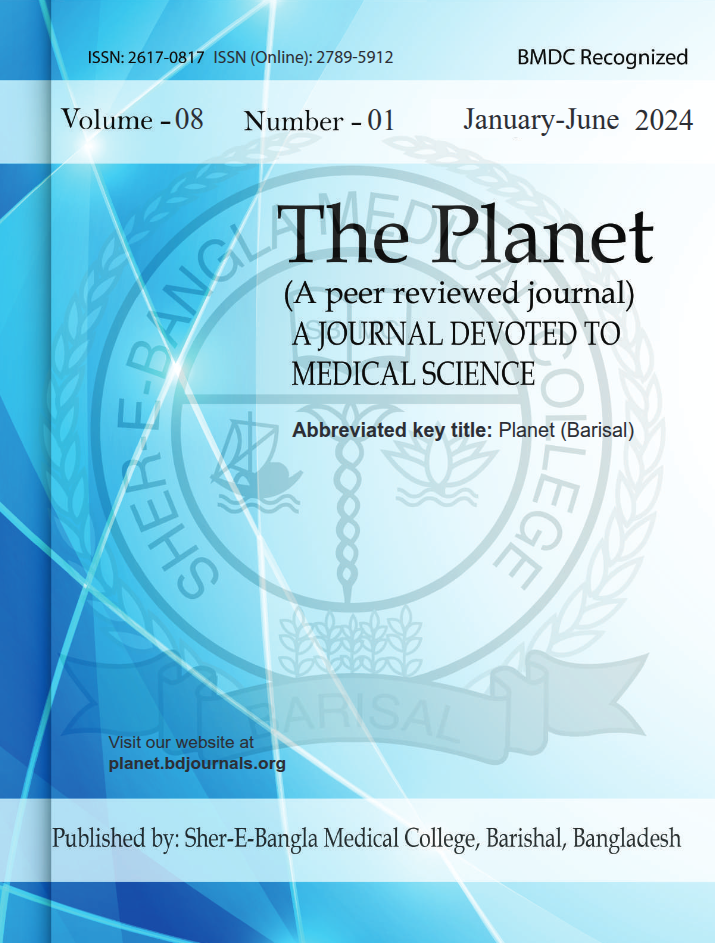Abstract
Aims and Objectives: To see the efficacy of topiramate in migraine prevention Methods & Materials: This prospective randomised control clinical trial was conducted in the Department of Medicine, Sylhet M.A.G. Osmani Medical College Hospital from 1stJuly 2009 to 30th June 2010. Fifty patients with migraine of more than 15 years of age were selected according to inclusion and exclusion criteria and divided randomly into two groups by lottery method. Patients of group-A were treated with topiramate 100mg/day and NSAIDs and prochlorperazine symptomatically; and patients of group-B (control group) were treated symptomatically with same NSAIDs and prochlorperazine. Results: The mean age of 27.640 ± 9.772 years in topiramate group and 28.320 ± 10.846 years in control group (p=0.817). In topiramate group, 24.0% of patients were male, 76.0% were female; whereas 36.0% patients were male and 64.0% were female in the control group (p=0.538). The frequency of migraine attack was decreased from 6.240 ±1.451 to 3.400 ± 1.041 in the topiramate group (p < 0.001) and from 6.000±1.608 to 5.840±1.491 in the control group (p< 0.103 and more reduction in topiramate group (p<0.001). The duration of migraine attack was decreased from 6.240±1.451 to 2.560± 0.290 in the topiramate group (p<0.001) and from 6.000±1.451 to 4.760± 0.321 in the control group (p < 0.001) but more decreased in topiramate group (p <0.001). The intensity of headache was decreased from 7.000± 1.259 to 3.400± 1.041 in the topiramate group (p < 0.001) and from 7.080±1.383 to 5.040±1.136 in the control group (p < 0.001) but marked reduction in topiramate group (p < 0.001). The physical disability was decreased from 12.800±5.447 to 5.920±2.691 in the topiramate group (p <0.001) and from 13.600± 5.686 to 8.440±4.154 in the control group (p<0.001) but more in topiramate group (p<0.014). The mental disability was decreased from 3.200±1 to 1.600 ± 0.763 in the topiramate group (p< 0.001) and from 3.360±1.221 to 2.400±0.957 in the control group (p<0.001) but more marked in topiramate group (p<0.002). The side effects such as nausea, anorexia, weight loss and taste perversion did not differ significantly in two groups (p>0.05) but paresthesia was significantly more in topiramate group (p=0.022). Conclusion: The efficacy and safety of topiramate 100mg/day in migraine prevention is established in this study.

This work is licensed under a Creative Commons Attribution 4.0 International License.
Copyright (c) 2025 The Planet


 PDF
PDF